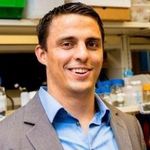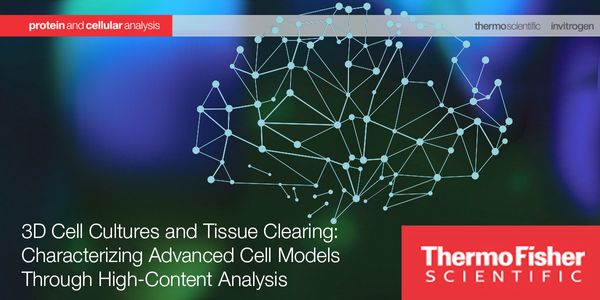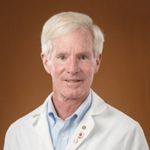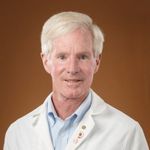Oxygen
Oxygen: is the chemical element with the symbol O and atomic number 8. It is a member of the chalcogen group on the periodic table, a highly reactive nonmetal, and an oxidizing agent that readily forms oxides with most elements as well as with other compounds.
-
OCT 10, 2018 | 10:30 AMPancreatic tumors are dynamic pseudo-organs that contain numerous cell types interacting to create unique physiology. A typical pancreatic tumor is made up largely of stromal fibroblasts and...Speaker: Costas A. Lyssiotis, PhDSEP 27, 2018 | 6:00 AMRoom air conditions are hypothermic, hypocapnic and hyperphysioxic from the cells’ point of view. Yet we stress cells with these uncontrolled conditions routinely. It is no wonder that...SEP 26, 2018 | 12:00 PMWith the advent of cost-effective culturing approaches, 3D cell culture models (3D-CCMs) have been rapidly adopted for drug discovery since they provide a more physiologically relevant micro-...SEP 13, 2018 | 12:00 PMThe greatest need in agriculture this century is to mitigate impacts of abiotic (drought, temperature, salinity) and biotic (pathogens, pests) stresses on crop plants. Efforts over the...AUG 09, 2018 | 7:00 AMWith the advent of cost effective culturing approaches, 3D cell culture models (3D-CCMs) have been rapidly adopted for drug discovery since they provide a more physiologically relevant micro-...MAY 30, 2018 | 7:30 AMGrowing living human cells in vitro for basic research, drug discovery and reparative/regenerative medicine is challenged by the difficulty in developing methods for reproducibly and cost eff...OCT 12, 2017 | 7:30 AMThe role played by inflammatory hypoxia in biology and treatment of solid tumors will be reviewed. The opportunity to enhance all forms of current anti-tumor therapies through tumor re-...Speaker: George Perdrizet, MD, PhD, FACSSEP 27, 2017 | 10:30 AMTo study cell metabolism, our laboratory has found it exceedingly informative to integrate Agilent Seahorse XF Analyzers with mass spectrometry-based measurements of metabolomics and stable i...Speaker: Ajit Divakaruni, PhDJUL 01, 2017 | 12:00 AMFor many decades, cell lines have been cultured in standard CO2 incubators at “normal” atmospheric oxygen concentrations of about 21%. But oxygen concentrations in the human or an...MAY 24, 2017 | 9:00 AMThe consistent and optimized production of living human cells for drug discovery and regenerative medicine faces many challenges including the need for cost effective large scale expansion, i...NOV 17, 2016 | 7:00 AMDATE: November 17, 2016 TIME: 7:00am PT, 10:00am ET Induced pluripotent stem (iPS) cell reprogramming allows turning an adult somatic cell into a pluripotent stem cell. Four Fac...MAY 04, 2016 | 1:00 PMIn vitro translation (IVT) using mammalian cell extracts is a quick and convenient alternative to in vivo mammalian protein expression. Thermo Fisher has developed IVT systems from two mammal...SEP 30, 2015 | 9:00 AMThe Warburg effect or aerobic glycolysis is a well-known cancer metabolism phenomenon and serves as an established test for tumor detection with FDG-PET scanning technology. Cancer cells swit...Speaker: Jennifer Molina, PhDSEP 16, 2015 | 12:00 PMAmong the frontier challenges in chemistry in the 21st century are the interconnected goals of increasing control of chemical reactivity while synthesizing and diversifying complex molecules ...Speaker: Christina WhiteSEP 02, 2015 | 3:00 PMBiofilm is an ancient and preferred mode of growth for microbes with 99% of all microbes residing in a biofilm. Biofilm is characterized by a community of microbes (usually polymicrobial ofte...SEP 02, 2015 | 7:30 AMThis presentation will discuss fundamental physical, chemical, and biological concepts important to understanding control of detrimental biofilms. Four phenomena that are important in the act...OCT 30, 2014 | 3:00 PMOncogenic mutations in isocitrate dehydrogenase 1 (IDH1) or 2 (IDH2) compromise their normal activity and induce NADPH-dependent (D)2-hydroxyglutarate (2HG) production within the cytosol or m...Speaker: Christian Metallo, PhDMAR 19, 2014 | 12:00 PMAxonal growth and pathfinding is fundamental to the development and regeneration of the nervous system. Src tyrosine kinase has been implicated in this process; however, the detailed molecula...FEB 06, 2014 | 11:00 AMBiofilms, are defined as communities of microorganisms that grow embedded in a self-generated matrix of exopolysaccharides and adhered to an inert surface or a live tissue. They are formed 95...Speaker: Yvonne M Heuze de lcaza, PhDPresented at: Laboratory Animal Sciences Virtual Event Series 2014
OCT 10, 2018 | 10:30 AM
Pancreatic tumors are dynamic pseudo-organs that contain numerous cell types interacting to create unique physiology. A typical pancreatic tumor is made up largely of stromal fibroblasts and...
Speaker:
Costas A. Lyssiotis, PhD
SEP 27, 2018 | 6:00 AM
Room air conditions are hypothermic, hypocapnic and hyperphysioxic from the cells’ point of view. Yet we stress cells with these uncontrolled conditions routinely. It is no wonder that...
SEP 26, 2018 | 12:00 PM
With the advent of cost-effective culturing approaches, 3D cell culture models (3D-CCMs) have been rapidly adopted for drug discovery since they provide a more physiologically relevant micro-...
SEP 13, 2018 | 12:00 PM
The greatest need in agriculture this century is to mitigate impacts of abiotic (drought, temperature, salinity) and biotic (pathogens, pests) stresses on crop plants. Efforts over the...
AUG 09, 2018 | 7:00 AM
With the advent of cost effective culturing approaches, 3D cell culture models (3D-CCMs) have been rapidly adopted for drug discovery since they provide a more physiologically relevant micro-...
MAY 30, 2018 | 7:30 AM
Growing living human cells in vitro for basic research, drug discovery and reparative/regenerative medicine is challenged by the difficulty in developing methods for reproducibly and cost eff...
OCT 12, 2017 | 7:30 AM
The role played by inflammatory hypoxia in biology and treatment of solid tumors will be reviewed. The opportunity to enhance all forms of current anti-tumor therapies through tumor re-...
Speaker:
George Perdrizet, MD, PhD, FACS
SEP 27, 2017 | 10:30 AM
To study cell metabolism, our laboratory has found it exceedingly informative to integrate Agilent Seahorse XF Analyzers with mass spectrometry-based measurements of metabolomics and stable i...
Speaker:
Ajit Divakaruni, PhD
JUL 01, 2017 | 12:00 AM
For many decades, cell lines have been cultured in standard CO2 incubators at “normal” atmospheric oxygen concentrations of about 21%. But oxygen concentrations in the human or an...
MAY 24, 2017 | 9:00 AM
The consistent and optimized production of living human cells for drug discovery and regenerative medicine faces many challenges including the need for cost effective large scale expansion, i...
NOV 17, 2016 | 7:00 AM
DATE: November 17, 2016
TIME: 7:00am PT, 10:00am ET
Induced pluripotent stem (iPS) cell reprogramming allows turning an adult somatic cell into a pluripotent stem cell. Four Fac...
MAY 04, 2016 | 1:00 PM
In vitro translation (IVT) using mammalian cell extracts is a quick and convenient alternative to in vivo mammalian protein expression. Thermo Fisher has developed IVT systems from two mammal...
SEP 30, 2015 | 9:00 AM
The Warburg effect or aerobic glycolysis is a well-known cancer metabolism phenomenon and serves as an established test for tumor detection with FDG-PET scanning technology. Cancer cells swit...
Speaker:
Jennifer Molina, PhD
SEP 16, 2015 | 12:00 PM
Among the frontier challenges in chemistry in the 21st century are the interconnected goals of increasing control of chemical reactivity while synthesizing and diversifying complex molecules ...
Speaker:
Christina White
SEP 02, 2015 | 3:00 PM
Biofilm is an ancient and preferred mode of growth for microbes with 99% of all microbes residing in a biofilm. Biofilm is characterized by a community of microbes (usually polymicrobial ofte...
SEP 02, 2015 | 7:30 AM
This presentation will discuss fundamental physical, chemical, and biological concepts important to understanding control of detrimental biofilms. Four phenomena that are important in the act...
OCT 30, 2014 | 3:00 PM
Oncogenic mutations in isocitrate dehydrogenase 1 (IDH1) or 2 (IDH2) compromise their normal activity and induce NADPH-dependent (D)2-hydroxyglutarate (2HG) production within the cytosol or m...
Speaker:
Christian Metallo, PhD
MAR 19, 2014 | 12:00 PM
Axonal growth and pathfinding is fundamental to the development and regeneration of the nervous system. Src tyrosine kinase has been implicated in this process; however, the detailed molecula...
FEB 06, 2014 | 11:00 AM
Biofilms, are defined as communities of microorganisms that grow embedded in a self-generated matrix of exopolysaccharides and adhered to an inert surface or a live tissue. They are formed 95...
Speaker:
Yvonne M Heuze de lcaza, PhD
Presented at: Laboratory Animal Sciences Virtual Event Series 2014



















